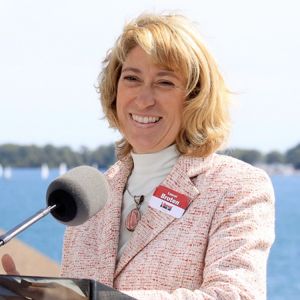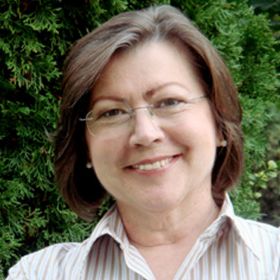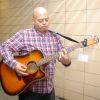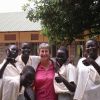TORONTO - Close to 7,000 Catholic elementary students could lose their breakfast program if proposed City of Toronto budget cuts are passed, says Trustee Maria Rizzo.
Without the breakfast program, kids will be going to school hungry, she said, and would be detrimental to student learning.
“I hope (Mayor) Rob Ford can make sure they'll give them a little bit of gravy,” Rizzo told The Catholic Register.
Education Minister confident Catholic boards will meet anti-bullying criteria
By Sheila Dabu Nonato, The Catholic RegisterTORONTO - Ontario Education Minister Laurel Broten praised the anti-bullying initiatives undertaken by Ontario Catholic school boards and said she is “very confident” that Catholic schools can fulfill new government requirements to make schools safer.
Broten told The Catholic Register that she was “pleased when we launched the comprehensive action plan last week” and “standing side by side with Catholic teachers and trustees, each and every one of them was standing up against bullying.”
TORONTO - It's a hallway and a museum and an innovative therapy all at the same time. Providence Healthcare unveiled its Memory Lane to three dozen Sisters of St. Joseph, benefactors and friends Nov. 30.
The hallway is full of memorabilia from the history of the Toronto hospital and the Sisters who built it up from nothing in 1851 to one of Canada's leading rehabilitation hospitals. Providence Healthcare patients battling memory loss are often encouraged to spend time with the Memory Lane's interactive displays to discover what memories old typewriters, nuns' habits, furniture, etc. will stir up.
TORONTO - Toronto Catholic District School Board trustees re-elected board chair Ann Andrachuk for a second term at their Dec. 1 board meeting.
Andrachuk spoke of the board's accomplishments in the past year, including balancing its budget, establishing committees on governance and student achievement and selecting a new director of education.
“We have been riding the crest of a wave,” she said. “I look forward to leading this board as we continue to move together with a strong and unified voice and shared wisdom, always focused on student success and achievement.”
Vatican II treasure hunt: Committee seeks bishops' notes, diaries
By Cindy Wooden, Catholic News ServiceVATICAN CITY - With a view toward the 50th anniversary of the opening of the Second Vatican Council, a pontifical committee has launched a worldwide treasure hunt.
Many of the more than 2,800 cardinals and bishops who participated in all or part of the 1962-65 council kept diaries, or at least notes; some wrote articles for their diocesan newspapers and most -- in the days before emails and relatively cheap trans-Atlantic phone calls -- wrote letters home.
The Pontifical Committee for Historical Sciences is asking church archivists, and even the family members of deceased council fathers, to look through their papers to find reflections that can add a personal touch to the historical research already conducted on the official acts of the council.
TORONTO - The key to a successful school, says principal Dianne Parwicki, is a strong partnership between parents, the school and the community,
“Leadership means building trust between parents and the school,” said Parwicki, who was honoured for her leadership with a Principal of Excellence Award by the Toronto Association of Parents in Catholic Education.
Parwicki, principal at Toronto's Fr. John Redmond High School, was honoured along with Toni Mayer, principal at Toronto's Holy Spirit Elementary School.
TORONTO - Birthright International has been for more than four decades a place that provides a loving alternative to abortion, said co-president Mary Berney.
“We’re here to help women and to basically show them how they can have their baby,” Berney told The Catholic Register.
Founded in Toronto in 1968 by Louise Summerhill, a mother of seven, Birthright International now has about 350 offices in Canada, the United States and Africa.
Solid, lasting and happy marriages aren’t as rare as the entertainment industry would seem to suggest — and are worth talking about.
And a group of mothers who had gathered for a Valentine’s Day event with their kids realized that.
“We were sitting around talking, then we started reminiscing about our romances and I was just so moved by different peoples’ stories and how God had helped them along,” said Kathy Cassanto, a mother from Braeside, Ont., who was so moved by her friends’ courtship stories she suggested they gather more stories and compile them into a book.
WASHINGTON - While studies have long shown the negative effects on children of divorce compared to those from two-parent households, a new study has determined that children born to cohabiting couples fare even worse than children from divorced families.
Despite a drop in the divorce rate, “family instability continues to increase for the nation’s children overall, mainly because more than 40 per cent of American children will now spend time in a cohabiting household,” according to the study, “Why Marriage Matters,” issued recently by the Centre for American Families at the Institute for American Values and the National Marriage Project, based at the University of Virginia.
More...
Subway busker spreads God’s love through song [w/ video]
By Sheila Dabu Nonato, The Catholic RegisterTORONTO - During the end-of-day rush hour at Sheppard subway station, TTC busker Benjamin “Lex” Tan strums his guitar, preparing to start his evening’s repertoire of pop music mixed in with rock, Christian contemporary and Christmas classics.
Although the pocket change is welcome (the most Tan’s made in a two- or three-hour session was $60), it’s the opportunity to share his talents and God’s love through the universal language of music that matters most, he said.
In fact, his most memorable “tip” from a TTC rider was a freshly baked pumpkin pie on his first day, Thanksgiving Monday.
TORONTO - An all-girls Toronto Catholic high school is looking to raise $20,000 this school year to help sustain South Sudan’s first secondary school for girls.
“We are trying to raise enough funds to help (the Loretto Sisters) open that school so young women can continue to be educated,” said Loretto Abbey High School principal Alda Bassani.
Toronto’s Loretto Abbey is partnering with another Loretto Abbey in Dublin, Ireland, to raise funds for the Loreto Secondary Boarding School in South Sudan. The school is run by the Irish province of the Loretto Sisters, also known as the Institute of the Blessed Virgin May (IBVM). Students and staff will be donating proceeds from charity events throughout the school year. Planned so far are a pasta night, Christmas concert and multicultural event.
TORONTO - The Toronto Catholic District School Board voted unanimously to look into creating the board’s first independent ombudsperson.
Vice-chair Jo-Ann Davis, who sponsored the motion at the Nov. 24 board meeting, said an independent ombudsperson would “ensure further transparency” and a system that’s “responsive and accountable.”
The TCDSB policy and governance committee will be looking into the motion and will be inviting experts to speak on the issue, she said.
Poverty in the midst of plenty: Hunger persists in the United States
By Mark Pattison, Catholic News ServiceWASHINGTON (CNS) - As U.S. nutritionists cringe over the prospect of an overweight nation indulging in a two-month binge of "season's eatings" -- from Halloween candy to Thanksgiving dinners to Christmas feasts to New Year's parties -- there are millions of Americans who aren't sure they're going to get enough to eat this day or the next.
The problem is made worse by lack of access to nutritious food, as residents of America's poorest cities and neighborhoods have little choice but to make do with fast food or convenience stores that don't stock fresh produce.














